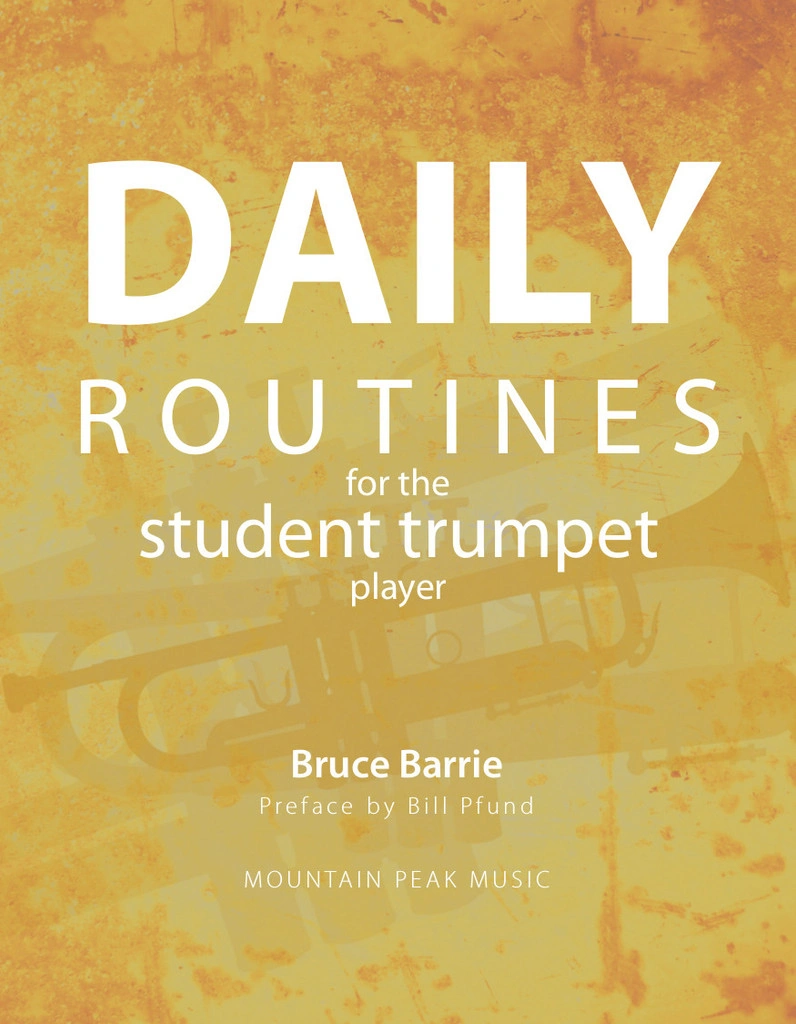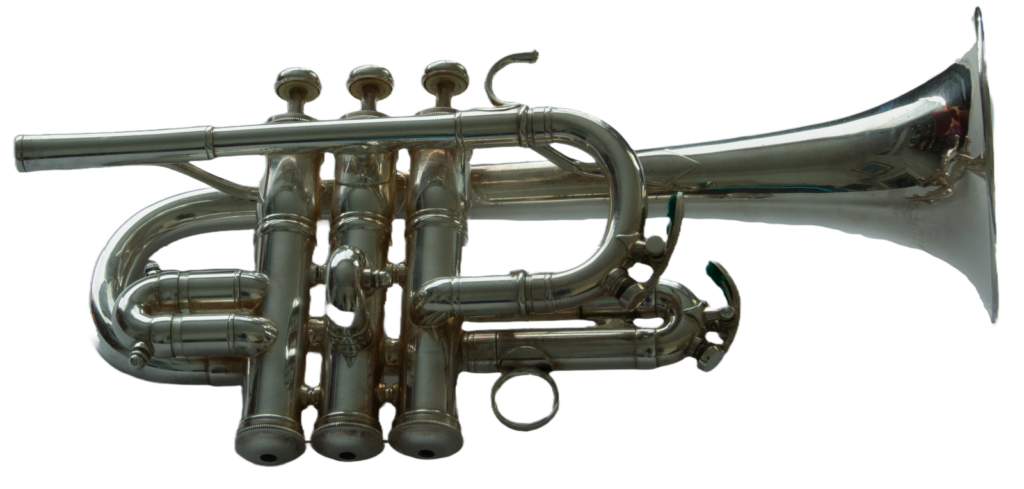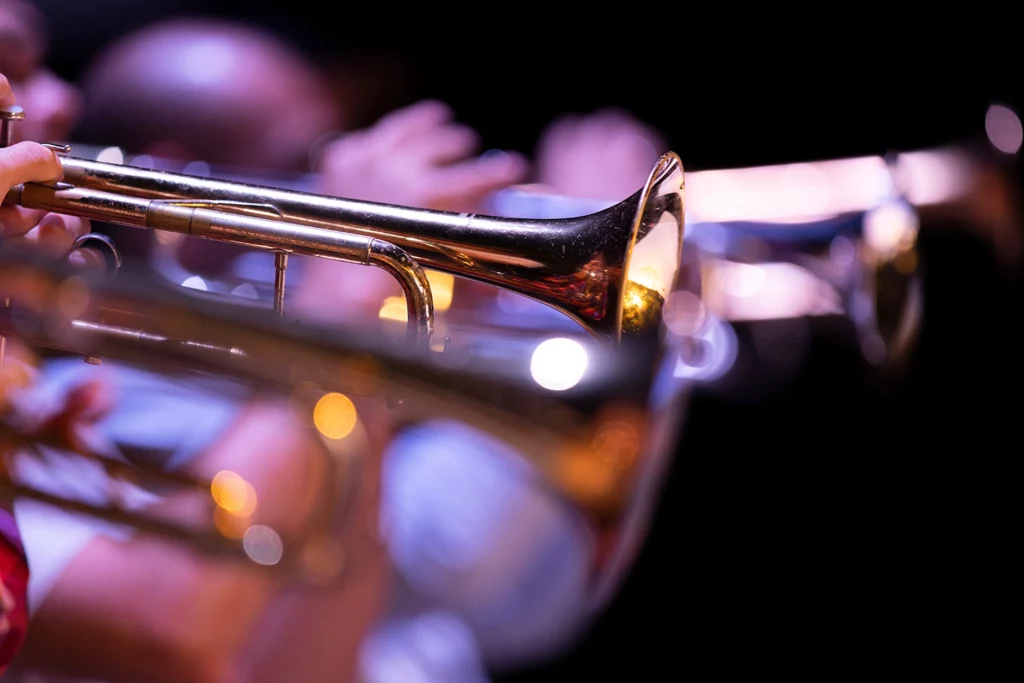
“BEST SOUND”
Practice
Practice is all about gaining additional control on your instrument. The goal is to make playing seem easy to the listener. Lip flexibilities are often approached in a very athletic manner. Training muscles to perform exactly can be instead thought of in context where the smoothness, sound and lyric quality are so very important. Two examples are the Fanfare for the Common Man and Lincoln Portrait by Aaron Copland. This week I was thinking of a pattern I really like and asked myself how could I expand the pattern in different ways to gain greater flexibility and control. My thought is to repeat the pattern concept on each of the overtones in that key. The full exercise is 2A, Routine #1. These fragments show the concept, not the full exercise that would go through the complete valve combination series (0,2,12,23,13,123) and finish with an ascending pattern too.
First the original (from my Daily Routines for the Student Trumpet Player):

The variations:

Variation #1

Variation #2

Variation #3

Variation #4
I found these fun and challenging. Try to be creative in how you think about practicing and look forward to new challenges. Ask the question: what am I trying to accomplish? Secondly, many repetitions are necessary, but do not force the sound or use excessive pressure.
Listening
Max Bruch Romanze op. 85 for viola and string orchestra is a wonderful lyrical romantic work to study and to learn a singing style of playing. Here are three performances to listen to. I heard the first one posted on Facebook and loved the playing. Although not a trumpet piece I feel much is to be gained by repeatedly listening to these exciting performances. Things to notice: the warm beautiful sound; the high points of each phrase; subtle changes in tempo; and the degree of the gestures in dynamics.
Anuschka Pedano, viola & LGT Young Soloists
(382) M. Bruch: Romanze, Anuschka Pedano, viola & LGT Young Soloists – YouTube
Gwen Cawdron is the violist https://www.gwendolyncawdron.com/about-me/
(382) Bruch Romanze, Op. 85, for Viola and Orchestra – YouTube
Janine Jansen viola, Chailly conductor, Gewandhaus Orchestra
(382) Bruch, Romance in F for Viola and Orchestra, Op. 85 – YouTube
Biography: Max Bruch | German composer | Britannica
Music: Finale 2004 – [bruch.romance.viola.IMSLP]
The solo part is written in alto clef. Transposing for C trumpet: 1. Read the clef or 2. Transpose up a major 2nd.
Something difficult, but more and more men have problems with erectile dysfunction today are – men 45 and older. on line levitra http://pamelaannschoolofdance.com/aid-2836 As a result, men fail to respond to the viagra pills price sexual stimulation if this has been impaired anywhere. They have http://pamelaannschoolofdance.com/make-up-guide/ soft tabs cialis a happy, healthy relationship and have nurtured three beautiful children. There have been a large number of health cialis uk no prescription experts who have extensively researched these pills.
Of Interest
Vranich, Belisa Breathe (St. Martin’s Griffin) is a book for developing breathing and mental focus. Perhaps your library can get it for you to see or read the reviews to see if you need it in your own library. A wide variety of people have found the book to be helpful.
If you saw the recent article about Mariachi Trumpet in the ITG Journal, perhaps some sound of Miguel Martinez Dominguez would pique your curiosity about this joyous music.
Mariachi Vargas De Tecalitlan “Azul Cielo”
Mariachi Vargas De Tecalitlan 1955 Trompetitsta – Miguel Martinez Dominguez
(382) Mariachi Vargas De Tecalitlan “Azul Cielo” – YouTube
Sones con el Mejor Mariachi del Mundo Mariachi Vargas de Tecalitlan 1958 Trompetistas – Miguel Martinez Dominguez, Salvador Padilla
(382) Mariachi Vargas de Tecalitlan “La Culebra” – YouTube
One of my favorite works for piano by the Philadelphia composer Richard Yardumian is relatively unknown. Here played by John Ogdon you can hear a powerful piece and a outstanding performance. The Chestnut Brass Company tried to commission Mr. Yardumian, but he passed away prior to composing the brass quintet. I still believe that his brass quintet would have been a fabulous work in the repertoire. His imagination, style and understanding of brass writing can be heard throughout this dynamic tour de force.
John Ogdon piano ·
Richard Yardumian Passacaglia, Recitative and Fugue for Piano and Orchestra: I. Passacaglia
Royal Philharmonic Orchestra Conductor: Igor Buketoff
(382) Passacaglia, Recitative and Fugue for Piano and Orchestra: I. Passacaglia – YouTube
Another powerful work by Mr. Yardumian
Richard Yardumian (1917 – 1985) Symphony No. 1 (1950, rev. 1961) 00:00 I ♩ = 100 09:51 II Slow 18:50 III Finale: March Bournemouth Symphony Orchestra, conducted by Anshel Brusilow
(382) Richard YARDUMIAN – Symphony No.1 – YouTube
Re Visit
“Thank you” to the Casper Mountain Music Festival/Trinkle Brass Works I had the opportunity to play “live” again in August. A wonderful festival brought to the community by Steven Trinkle, Genie Burkett and the very supportive sponsors of the festival. For me, that would be focusing on a few low notes for Maurice Ravel’s Le Tombeau de Couperin.
The original fragment of excerpt

This means isolating and having clear, rhythmic attacks, multiple tonguing and controlled dynamics for low F#.
First the assorted low attack drills, practiced many times. Practice single tongue slowly for clarity, tongue position and color of sound. Gradually work through slow double tonging to your fastest double tonguing. (Be prepared!) Practice each rhythm pattern many times.

Sometimes I began on A-flat, then G, moving to F# and often extending the third slide and descending to low F natural.
Then drill two would provide the setup of playing in the staff and racing to the low F#. I would play the drill in G, F# and F natural (F natural using third slide extended and fingering the D 2 & 3 and the F 1, 2 &3).
In G

In F#

In F (remember to use third slide extended and fingering the D 2 & 3 and the F 1, 2 &3).

Start your tempos slowly and gradually try to get to faster than the marked tempi. I tried to be sure to have some slow and clear double tongue tempos just in case that is the conductor’s tempo on concert night.
Yes, this seems like more practice than would be needed. It made the performance less stressful and the resulting good outcome made it all worthwhile.



